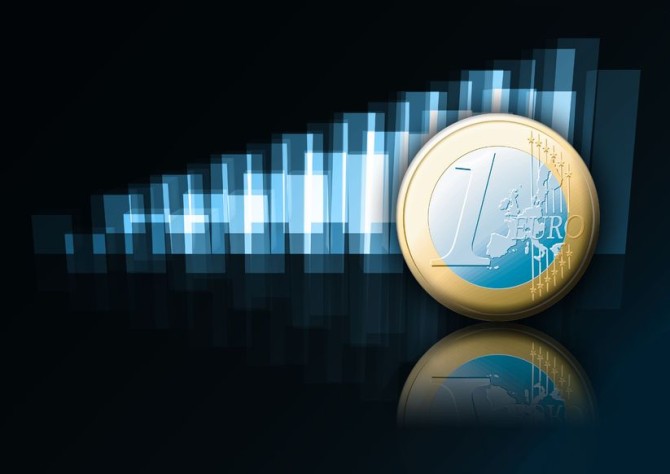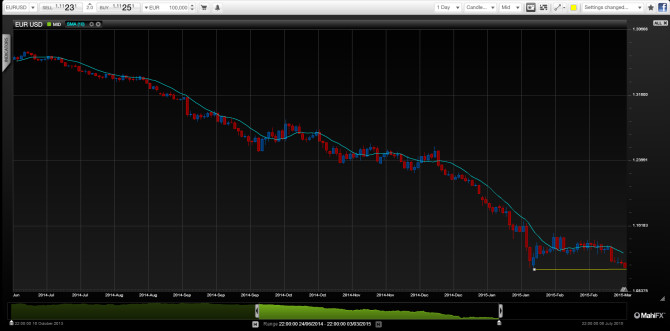Cheaper oil, low interest rates and strong US growth may be starting to work their magic on the flagging Eurozone economy – if so a recovery of the EUR should follow in due course.
For now the EUR remains under pressure, not least with the European Central Bank launching its EUR 1.1 trillion quantitative easing programme (EUR 60 billion a month). If the US starts raising interest rates this year — then EURUSD at parity is still very likely, but it may not last long.
The early seeds of Eurozone recovery could be in the process of being sown. Q4, 2014 quarterly GDP was 0.3%, compared with 0.2% and 0.1% during the previous two quarters. Encouragingly this happened before the ECB even started its QE programme and the oil price only tanked in December.

And there are signs of improvement at the Eurozone’s periphery too. During Q4, Spain’s GDP rose 0.7% and Portugal’s 0.5%. In fact only three Eurozone countries, which reported Q4 numbers, saw a contraction: Greece -0.2%, Cyprus -0.7% and Finland -0.3%. Germany, the motor of the Eurozone, grew 0.7%.
By Justin Pugsley, Markets Analyst MahiFX
Meanwhile, M1 money supply (money in circulation and short-term deposits) rose 9% in January, it’s fastest since 2011. Rising money supply is usually a sign of increasingly economic activity and can also point to higher inflation (though price pressures are still very subdued in the Eurozone).
EURUSD likely to be still heading for parity, but may not stay there long

Tentatively optimistic
Another strong support for the Eurozone is its huge current account surplus standing at EUR 240.2 billion in 2014, (USD 267 billion), well ahead of China’s at USD 213.8 billion – the world’s manufacturing and exporting power house.
Any recovery in the Eurozone would be welcome news for the global economy. It would reduce strains on other countries to pursue increasingly aggressive devaluation policies, which could eventually degenerate into highly damaging trade wars.
Increasing economic activity should also subdue deflationary pressures and if accompanied by broad and sustained GDP growth, the ECB could even start winding down its QE programme ahead of schedule, which would certainly be bullish for the EUR.
The other point is that the recovery looks relatively broad based, which will do much to ease the near perpetual economic strains within the Eurozone, which result from a one-size fits all exchange rate and monetary policy – ensuring that most of the time it’s never quite right for anyone.
But the Eurozone’s recovery is still in its early days and therefore relatively fragile and has a tendency to disappoint. There are still many things that could go wrong. Geopolitical tensions remain with Russia and the Middle East, the Greek crisis, though contained remains a risk, the rise of extremist political parties and oil prices could recover back to USD 100 a barrel chocking off consumer spending.
The short-term outlook for EURUSD remains bearish, but longer-term it is more bullish – providing there’s a broad-based and sustained Eurozone economic recovery, in which case an eventual return to 1.2000-1.3000 can be expected.
In this week’s podcast, we cover Yellen & the hike, AUD & CAD rate previews, Jobless claims vs. USD & Greek back burner
Subscribe to our iTunes page
